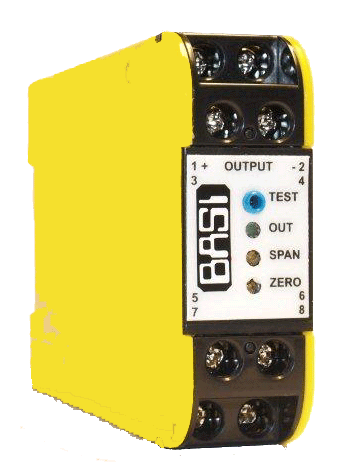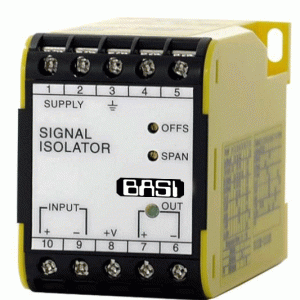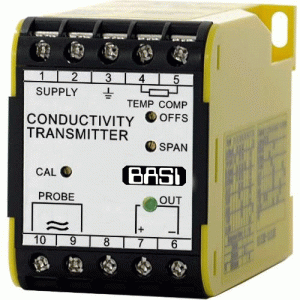Description
The BRTDT225 is a RTD temperature transmitter that features input output isolation. Standard output is 4 – 20mA with a minimum supply voltage of 6.3V. This enables the BRTDT225 to be used in 12V battery supply systems or in automotive applications. Other factory set output configurations are 10 – 50mA loop powered and 0 – 10mA, 0 – 20mA or voltage output in 3-wire connection up to 40Vdc. Double surge protection is standard with all Series 200 loop powered transmitters to prevent failure due to spikes induced by DC switched inductive loads. The BRTDT225 accepts inputs from any type of resistance bulb with a signal swing of 7Ω up to 230 Ω. In the case of the popular industry standard Pt100 this would represent a temperature span from 15°C up to 650°C. The RTD is wired in 3-wire fashion to avoid errors caused by lead resistance changes. 2-wire connection can be used with a short lead length or under constant temperature conditions. Lead calibration resistors are not required as the front accessible span and offset trimmers can be used for final system calibration. Sensor excitation current is as low as 0.35mA preventing selfheating of the sensor. Lead breakage will cause the output to increase to maximum (Downscale burnout optional). For inputs starting below or above 0°C (example 50…150°C) a 15-turn balance potentiometer located on the input card is used for suppression or elevation. The BRTDT225 is linearised to within 0.5% for Pt100 inputs. Differential inputs from 2x Pt100 sensors can only be connected in 2-wire mode. Lead balance errors can be avoided by using approximately even cable run length and same type of cable. Bipolar temperature differences (example Dt =-10…+10°C) are calibrated with the 0-point at mid-scale output (12mA). Final calibration is trimmed using the front accessible zero and span 15-turn trim adjustments. A front mounted L.E.D. and a test socket verify module function and assist in calibration checks without disconnection of output




